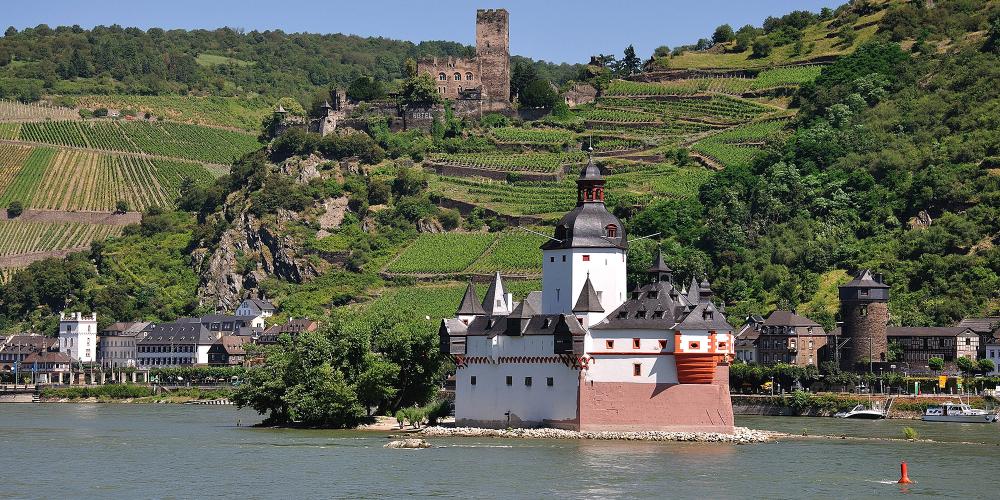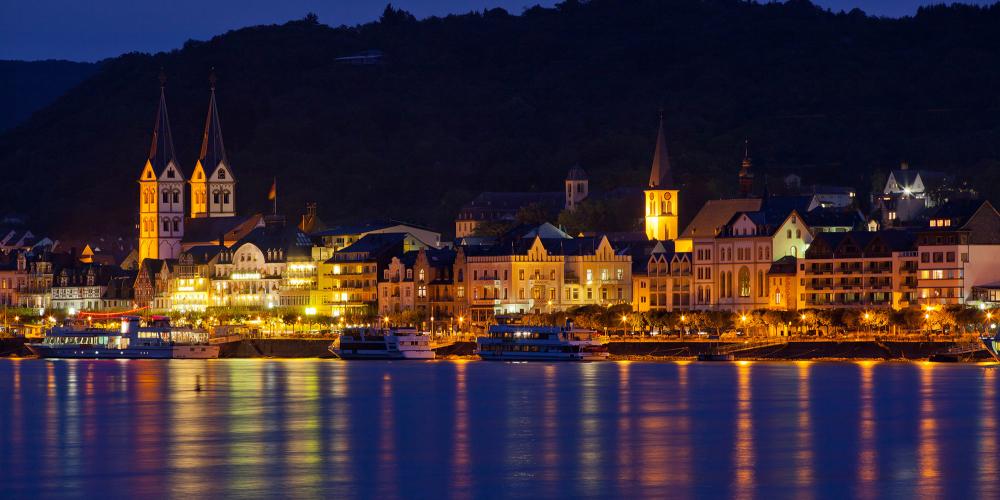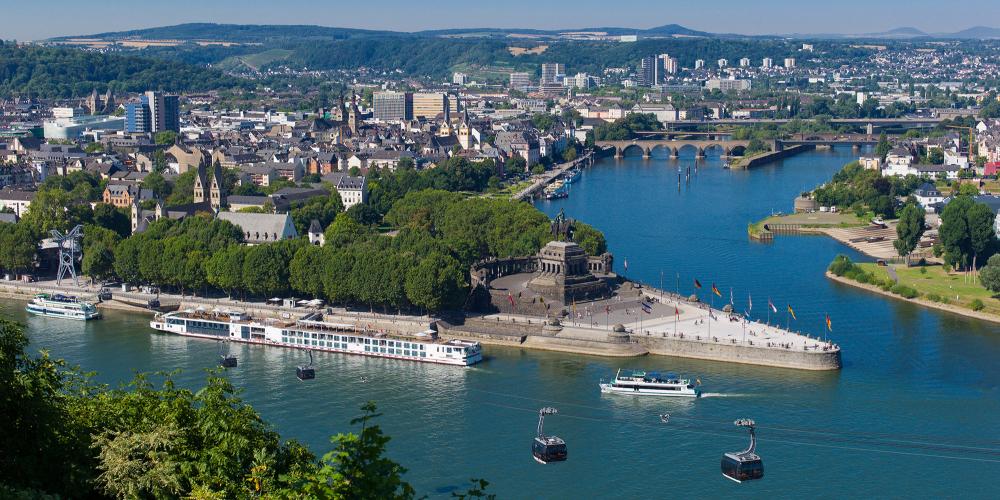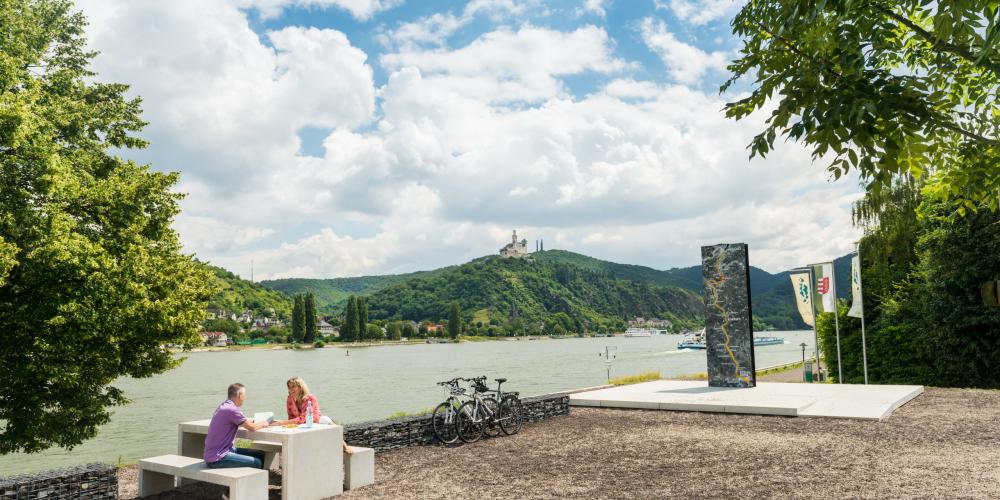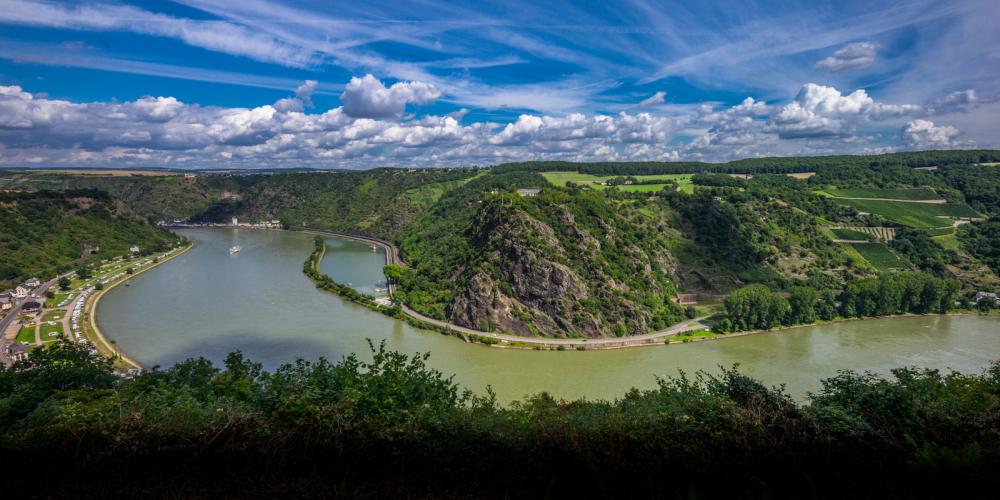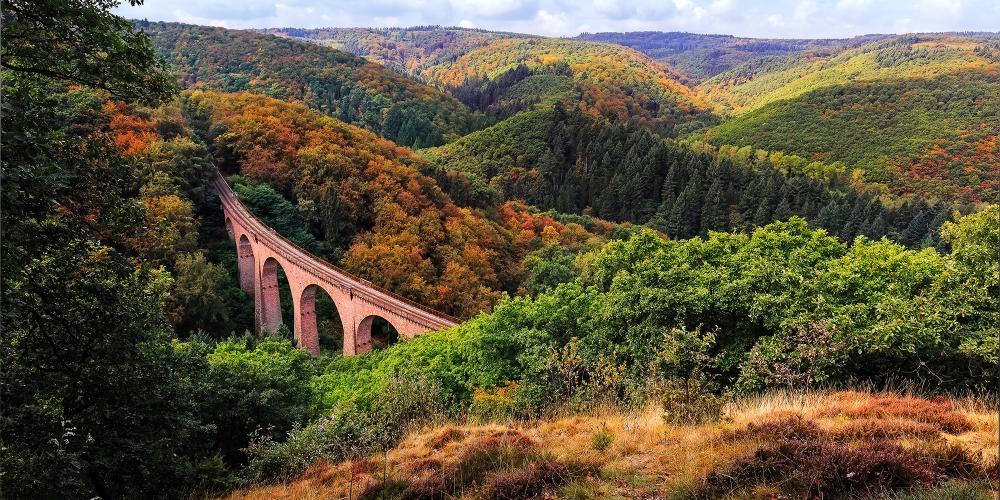Upper Middle Rhine Valley, Germany

Imbued with the spirit of German Romanticism, the Rhine River has inspired fairy tales, fables, poetry, and paintings. Its mythical underwater maidens and their magic gold provided the muse for Wagner’s "Ring" opera cycle. The evocative voyage from Mainz to Koblenz has been a favorite with travellers since the 19th century. The stretch from Bingen, west of Mainz, runs through a steep and narrow gorge, and has more castles than any other river in the world. Below these cliff-top fortresses sit villages of half-timbered houses, like the settlement of Bacharach, which owe their existence to the Riesling grape grown along the hillsides.
The reason for all this creative energy in one place is simple. The Rhine has been an important transportation link between the north and south of Europe for thousands of years. This led to an exchange of culture and a flow of trade, which has helped build small towns and impressive fortresses along the river’s course. It is no wonder this natural beauty and historic architecture have fueled artists, writers, and musicians over the past two centuries.
As the epochs changed, at the beginning of the 19th century, a new generation of artists—from the early Romantic period—discovered a beauty in the Rhine's wild cultural landscape. The river started to appear in German literature. Within 20 years, English Romantic artists like JMW Turner and writers like Lord Byron brought international fame to the Rhine and breathed new life into the valley.
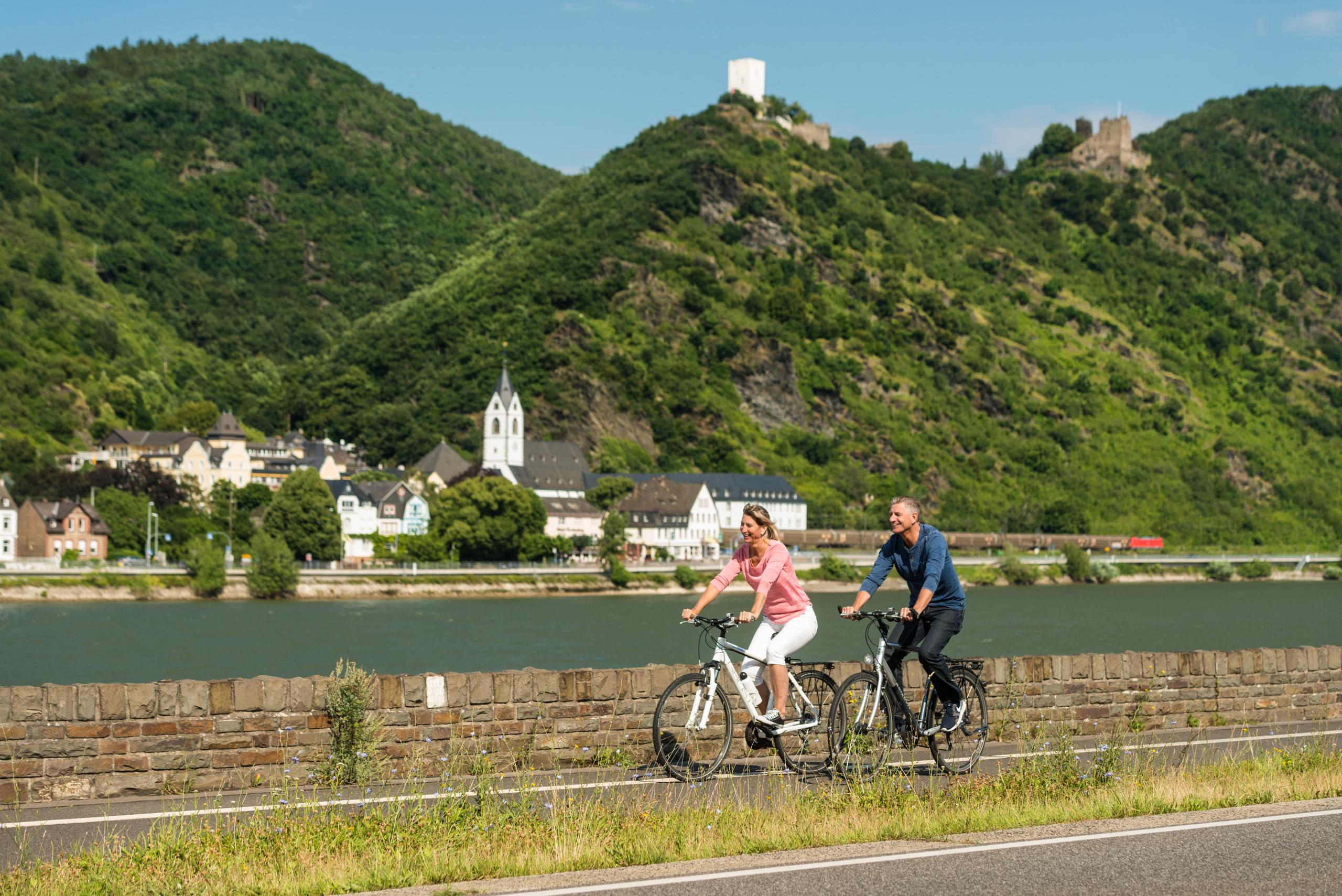
The Upper Middle Rhine Valley stretches for 67 kilometres, down a gentle winding stretch of the river. Starting at Bingen, you can travel by boat, car, bicycle, or foot, with panoramic views along the whole route. The castles stand high on the hills and many of them are open to the public. Shoreside hamlets offer plenty of opportunities for rest and exploration. People come from across the world to see the striking Loreley Rock, near the town of Sankt Goarshausen, which is a symbol of Rhine Romanticism and the subject of well-known poems and songs. At the end of the valley, the beautiful city of Koblenz has a cable car which can take you across the water and up to the Ehrenbreitstein Fortress.
Eternal Beauty
The Loreley Valley, a stretch of the Rhine between Koblenz and Rüdesheim/Bingen, is among the most romantic river sections in Europe. Though less than 70 kilometres long, the area is dense with culture and history. Its importance as a transport and trade route, and the diverse culture it has developed organically over 2,000 years are what enabled its inscription as a World Heritage site in 2002. The region offers a uniquely romantic journey through picturesque towns, castles, palaces, ruins, as well as artistic and cultural treasures abound.

You can find tributes and references to the Rhine in operas, poems and songs around the world. The area's majesty was set to canvas by English landscape painters, including William Turner, the famous English artist, in the 17th and 18th centuries.
Romanticism is most closely associated with the ancient walls of the castles and castle ruins. Their violent past was long, long ago. Today, many of the old walls and fortresses have been given a new lease on life and you can spend the night in these incredibly picturesque hotels and hostels. There are almost 40 of the structures between the Mäuseturm (Mouse Tower), near Bingen, and Koblenz. Of these, the impressive Marksburg Castle towers over Braubach and has remained intact. It is now the headquarters of the German Castle Association and provides a great example of medieval life.
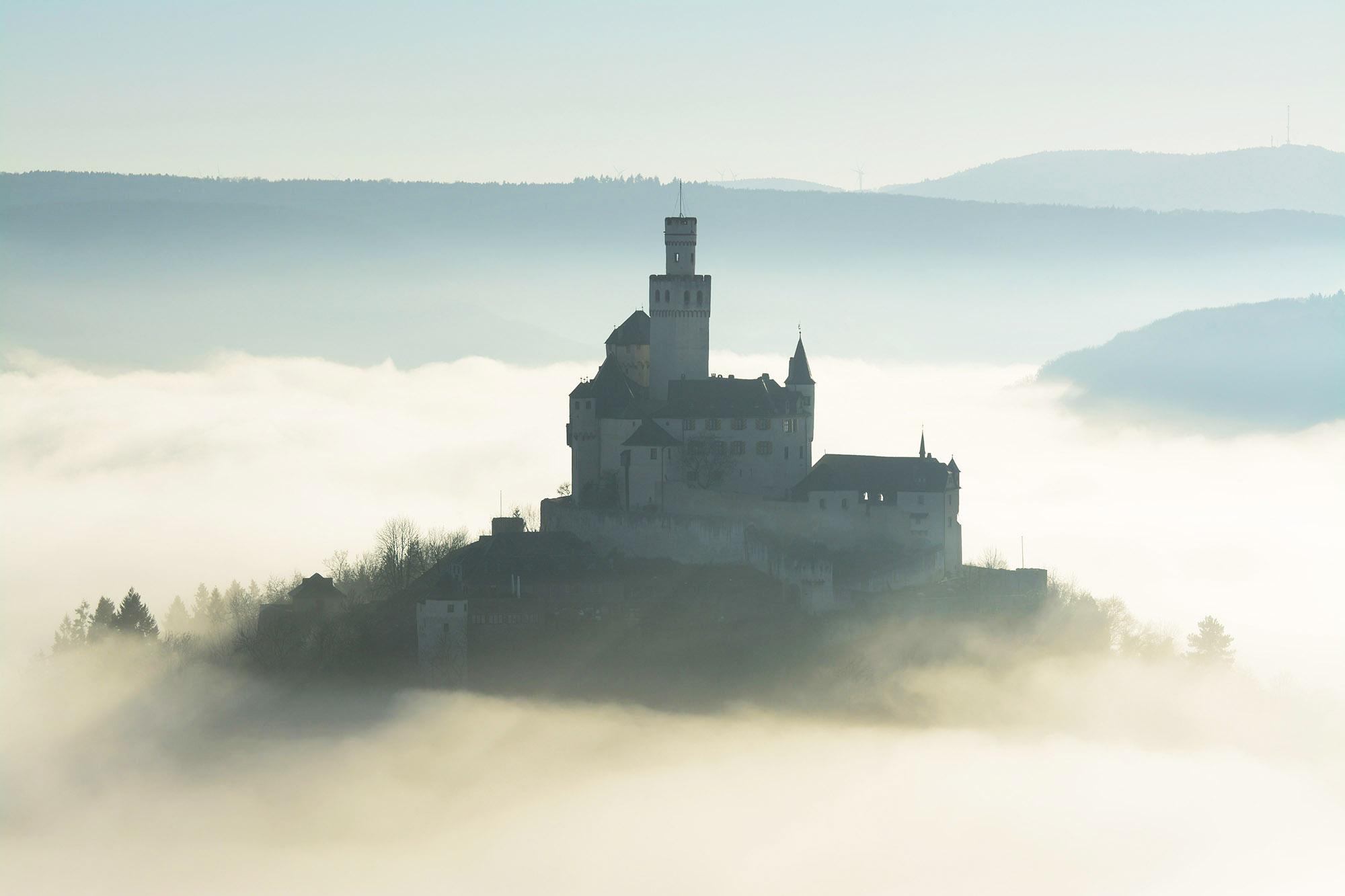
Wine from the Rhine: Sweet Festival Fuel
The elegant Riesling wines from the Rhine are treasured all over the world. The best way to truly appreciate these award-winning wines is to visit the local vineyard pubs and restaurants, meeting the producers and learning more about the culture from which they are created.
The Rhine is a relaxed and welcoming landscape, where golden-colored wine sparkles, locals clink glasses to toast romance and good living. Throughout the year, there are countless celebrations, festivals, and fairs paying tribute to Riesling, including the Rhein in Flammen: the "Rhine in Flames" festival that takes place every summer. Come join the celebrations and you will witness bright, sparkling lights, the mysterious Bengal fire, and the longest boat convoy in Europe (80 vessels), which add to the explosive firework displays that transform the river into a colourful fairytale landscape.
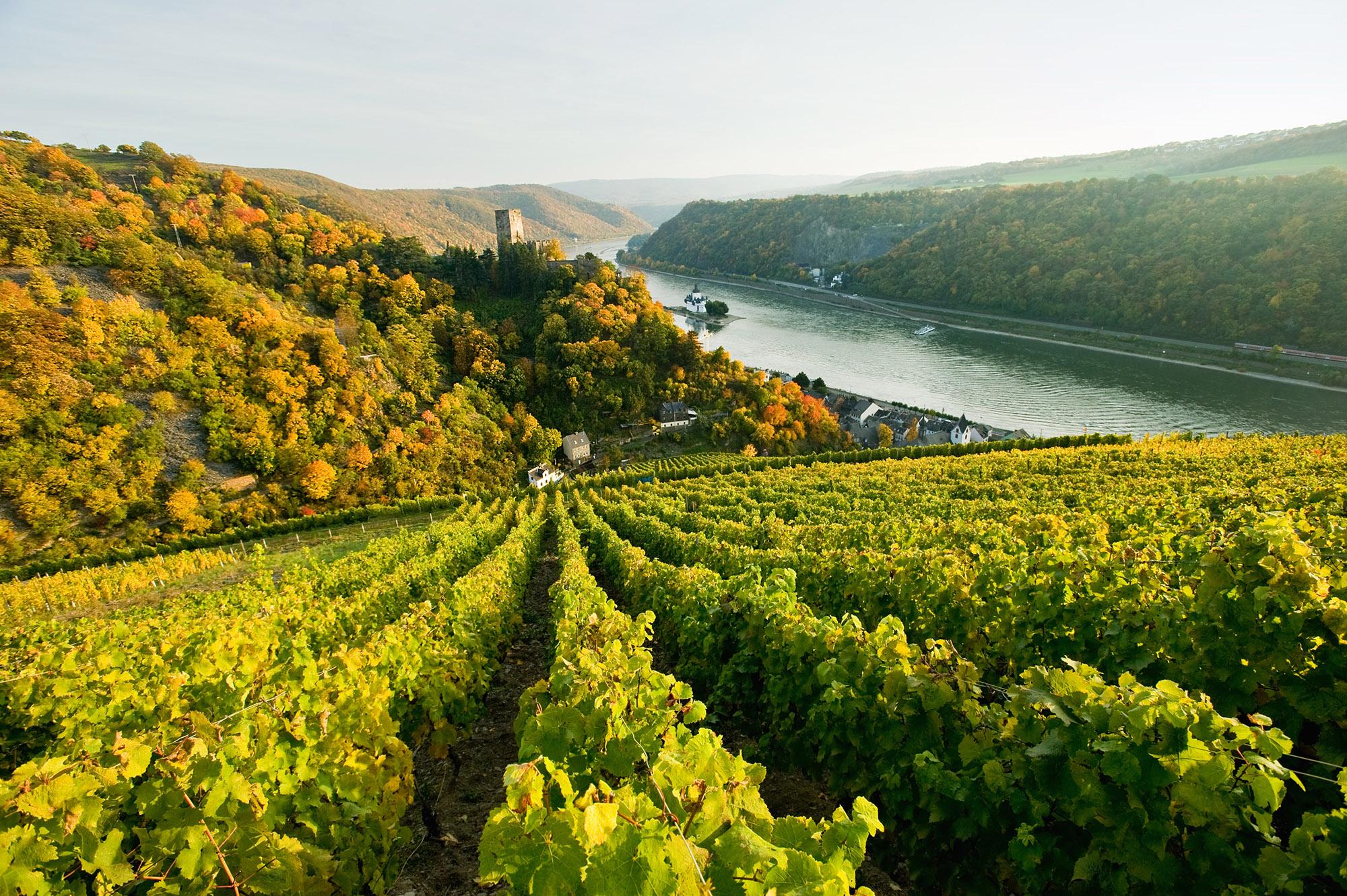
How to Get There
If travelling by plane, the following airports are located near the Rhine Valley: Frankfurt/Main and Frankfurt-Hahn (both approx. 60km away to Bingen, southern gateway to the Rhine valley ); Köln-Bonn airport (100 km away.via Koblenz, northern gateway to the Rhine valley).
If arriving by car, take one of the following national motorways/highways: A61 Köln-Ludwigshafen; A3 Köln- Frankfurt; A48 Luxemburg/Trier-Montabaur; B42 Bonn-Wiesbaden; B9 Mainz-Köln.
The Rhine Valley is very well connected by rail, and most of the towns on both sides of the river have their own train stations. Deutsche Bahn offers direct connections from Frankfurt Airport, and Köln Hbf. (Cologne Central Station)
When to Visit
The Rhine Valley is a beautiful place to visit all year round. Come in the spring for hiking and cycling. Summer is the time to discover the river and the castles and enjoy the “Rhine in Flames" festival. Autumn is always wonderful—for the colors and the romance—and to be among the first to taste the new Rieslings.
How to Visit
To experience the Upper Middle Rhine Valley, you can travel by boat, car, railway, bicycle, or foot with panoramic views along the whole route. There are six ferries that cross the river so it's easy to visit both sides. You don't need to hire a car, as the region is well serviced by public transport. The towns and villages are well connected by hiking trails and bike routes, with frequent stops in castles, vineyards and restaurants along the way. To truly make the most of the culture and activities here, we recommend you stay for at least four days.
